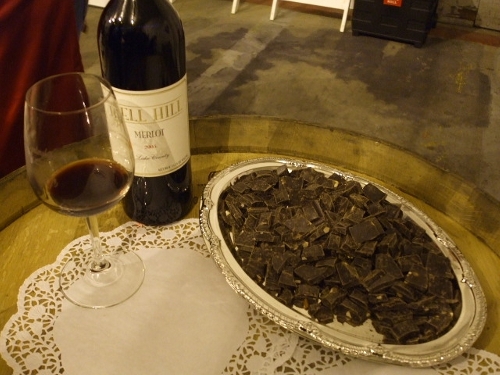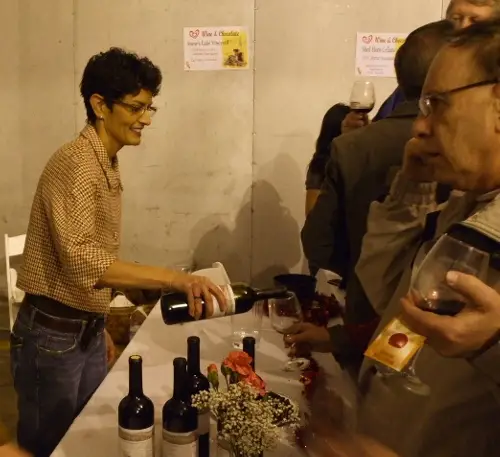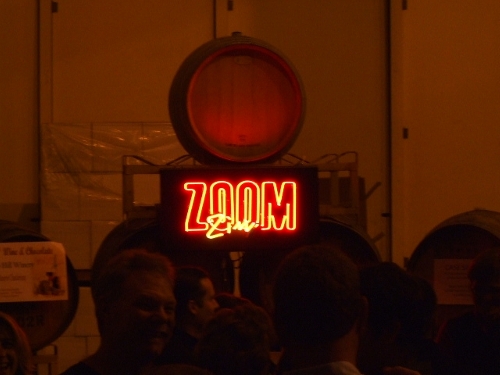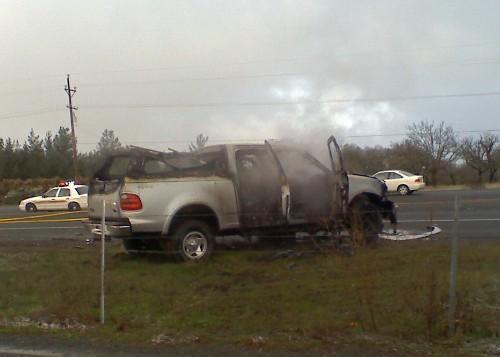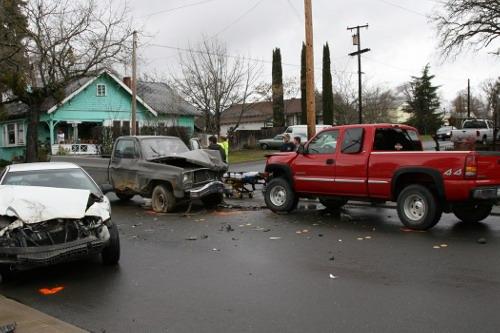The ancient Greeks are the first on record with the suggestion that something would taste better because of where it came from, although the idea must certainly go back to before historical records.
The Greeks traded with many different cultures, and wine was imported from other regions. Greek merchants started marking the earthenware jugs that wine was stored in (called amphorae) with symbols that denoted where the wine came from, and people came to prefer wines from certain regions.
The Hungarians created the idea of systematically designating official “growing regions” in 1730, taking note of the conditions of the soil, sun exposure and the potential to develop disease.
The idea of growing regions slowly became popular throughout Europe, and by 1935 the French officially started the Institut National des Appellations d’Origine and eventually established the Appellation d’Origine Controlee label (AOC) in the 1950s as the official French government brand.
This system is now used worldwide for wine, coffee, tea, cheese, lentils; the French even have an AOC label on a breed of chicken. The French breed of chicken called Poulet de Bresse has a red comb, white feathered body and blue legs which are, of course, the colors of the French flag.
If you remember from my article on the High Valley American Viticultural Area (AVA), there is little difference between an AVA and the French appellation system (AOC). They both designate specific areas based on terrain, climate and soil conditions for growing a particular item.
Probably the world’s most famous appellation is Champagne, which produces the renowned bubbly drink that, if made anywhere else in the world, must by law be called “sparkling wine.” Some winemakers will skirt around this by putting “methode champagniose” on the label, meaning made by the Champagne Method. Many countries have now adopted similar systems of “environmental pedigrees.”
The Red Hills AVA was established in 2004 and contains numerous wineries on more than 31,000 acres. There are many independent vineyards in the AVA that don’t have wineries of their own but grow grapes to sell to wineries within the AVA, throughout the county, and even to neighboring counties.
The most noticeable factor of the vineyards in the AVA is that the soil is predominantly red lava from the area’s dead volcanoes. Although the total acreage of the Red Hills may seem quite large, the amount of acres that are suitable for vineyards is actually rather small.
The climate of the Red Hills AVA is very similar to the Rhone Valley and Bordeaux region of France, so grape varietals from those areas grow really well in the Red Hills AVA. Rhone variety grapes like cooler conditions, while Bordeaux variety of grapes like a warmer situation. The Red Hills AVA provides both.
If you want to have a little giggle at wine advertisements you can have one when they mention the rich soil of the vineyards. The truth is that better wines come from poorer soils compared to farms that grow things like corn, lettuce or similar crops. If the soil is too rich and organic the vines grow too fast and the grapes are too big. Wine tastes better if the grapes are half-starved.
This is why the Red Hills AVA is so good for vines: lava isn’t really a nutrient. The soil of the Red Hills is more like compact sand and porous lava rocks. Water trickles down and sits 3 to 9 feet below the surface, forcing the vine to reach down deep with its roots to get a drink and making a really strong healthy plant in the process.
All sorts of wild life call the Red Hills home. In visiting these various vineyards while researching this column, I personally saw deer, a cougar, jackrabbits and several types of birds of prey. Reports from the vineyards include boar, bears and turkeys making appearances on the properties. The Red Hills has the benefit of plenty of land to share with the wildlife of the area and still have vineyards dotting the landscape. Some of the larger vineyards leave sizable wild areas cutting through their property (called wildlife corridors), which not only gives wildlife a place to survive but cuts down on damage from wildlife in the vineyards by leaving native habitat on which they can forage.
Bryan Kane of Sol Rouge admitted that the deer fence around his vineyard was the single highest cost of his vineyard. Deer fences were a common site as I visited various vineyards. Large wineries that have hundreds of acres of vines can afford to lose some of their crop to wildlife, but smaller ones like those of the Red Hills can’t survive with that kind of damage because every vine matters. In Napa and Sonoma counties, damage from wild pigs on occasion has been so substantial that wineries invite hunters to their properties in order to thin out the populations.
The Red Hills seem to have been anointed with the name “red” in order to color code which wines should be grown there. The red wines of the AVA, in my not-so-humble opinion, are the best I’ve ever tasted. Even people who prefer white wines, like me, will find many red wines from the Red Hills that they will love.
My original idea of mentioning all the awards the Red Hills vineyards and wineries have won for their wines was quickly thrown out since there are so many they would take up too much room of the article. This isn’t to say that white wines from the AVA aren’t great also but the reds steal the spotlight.
Many of the people I spoke to about the Red Hills made a point to mention that the Mayacamas mountain range that passes through Napa is the same mountain range that runs through Lake County. As much as Napa has touted itself as the nation’s absolute superior AVA, you should keep in mind that climate and terrain are not respecters of arbitrarily drawn county line designations.
Being a part of the same mountain range, it simply stands to reason that much of what makes wines grown in Napa of such high quality would also make Lake County wines of a similar quality. But then Lake County has the advantage of having the cleanest air in the state.
The Red Hills vineyards are also at a higher altitude than Napa vineyards, which produces a greater intensity of flavor in the grapes, and they have the benefits of the Red Hills volcanic soil. So conditions in the Red Hills are similar to Napa, plus ... plus ... plus.
Napa valley growers are aware of the superiority of Lake County grapes and are looking north to take advantage of it. Many wineries in Napa buy Lake County grapes to mix with their own wines, and there are some who have started vineyards of their own in Lake County to be able to ship the grapes to Napa to blend with their wines. Some Napa valley wineries have to add tannins and tweak their wines in order produce a flavor similar to how Red Hills wines taste naturally. Buying Lake County grapes allows them to gain the benefits without having to start or market a new label. Nevertheless, Napa is out of land and so when they need more grapes they are looking to Lake County.
I found a common denominator when I spoke to vineyard owners, growers and winemakers in the Red Hills. They all came specifically to the Red Hills to grow their grapes and make their wines there because of the unique characteristics of the place. They didn’t choose the Red Hills because the land was cheap or easy to grow on but purposefully sought out the conditions the Red Hills AVA provides.
They have pride in the fact that their wines are grown in the Red Hills; this is evident when you look around at things that are produced in the AVA. Bottles are marked “Red Hills” while most other wines from in the county don’t mention their AVA or the county at all on their bottles. Gregory Graham sells shirts with his winery’s name and “Red Hills” right along with it. The pride in the Red Hills really shows.
Cougar’s Leap Winery, which started as the Black Frog Ranch/Vineyard, sits at an elevation of 2,300 feet and has 80 acres, 35 of which are planted with two varietals. They are completely off the utilities grid (they produce their own electricity, water, etc.). They chose the name Cougar’s Leap because cougars have been seen on the property. The property is accented with retaining walls made of huge blocks of obsidian which were removed from the ground when the vineyards were planted.
Fortress Vineyards owns 340 acres, 70 of which are planted with six varietals. What sets them apart is that half of the vines are white and the other half red. They are located on Benson Ridge at 2,000 to 2,400 feet in elevation. The large rocks and boulders pulled from the soil during the soil preparation and planting process were placed about the property and give it a fortress-like appearance, giving the vineyard its name.
They are on the way to producing their own wines but some of the grapes are currently being sold to Napa. Barbara Snider is co-owner, and describes the vineyard as being a high altitude, mountain vineyard that gets direct lake influence, since they are actually on Mt. Konocti. She also explained that her musque clone vines grow very well in the climate. They have no immediate plans to expand.
Gregory Graham Winery sits between 1,800 and 2,000 feet above sea level with 35 acres, 27 of which are planted with grapes of four varietals. He waters his vines with well water from two wells on the property. His property gets less fog and clouds than most areas of the county so his vines get more growing time, are faster to go to flower, and are harvested later in the season so they can really pack in the flavor. It should also be noted that all of Graham’s red wines are estate grown, fermented and bottled.
The Moore Family Winery sits right on the edge of the Red Hills AVA. They own 100 acres, 14 being planted with three varietals and more to come in the near future. At 3,000 feet above sea level, their tasting room is reported to be the highest altitude tasting room in California. They have a couple of manmade ponds that are used for irrigation and swimming, and one is stocked with fish. (All of these wineries are mocking me with their personal fishing ponds; it’s like some sort of conspiracy!) They are also in the process of digging a cave/conference center into the side of the mountain they are on.
Obsidian Ridge has 112 acres, 105 of which are planted with four varietals at an elevation of 2,350 to 2,640 feet. Their name is a nod to the fact that, just to plant the vineyard, they had to remove 200 tons of obsidian (aka bottle rock) from the property. Obsidian is still a large component of their landscape, with some pieces weighing a couple of hundred pounds.
Red Lava Vineyards owns 80 acres, with 10 being planted only with Syrah for now. There are plans to expand, which even include a winery in the future. The vineyard is not far from Beckstoffer Vineyards, with a southern exposure overlooking Thurston Lake on a 14- to 16-percent grade. Every morning has a strong lake breeze flowing across the vineyard.
Sol Rouge Vineyards and Winery owns 70 acres, with six planted including nine varietals. They have an irrigation pond left over from when the property was a walnut orchard. Bryan Kane, the owner of Sol Rouge, told me that the Red Hills AVA gets the grape skins to grow thick and this gives you better color, flavors and tannins into the final product. He also mentioned how he searched the entire state looking for where he wanted to grow the best grapes and chose the Red Hills because it had everything he was looking for in order to produce the factors that he wanted in his wines.
Snows Lake Vineyard owns 2,300 acres, 800 of which are planted with seven varietals. All of the varietals are red wine grapes, 75 percent of the acreage going to Cabernet Sauvignon. They are between 1,900 and 2,400 feet in elevation and are owned by the Ladera Management Co.
They not only have their own label of Snows Lake Cabernet Sauvignon called “One” and a Cabernet Sauvignon/Cabernet Franc blend called “Two,” they also sell grapes which are used in 10 to 12 branded products including Cakebread Cellars, Hawkscrest, Dynamite, Cartlidge and Browne, Rosenblum Cellars and Jade Mountain, just to name a few. Listening to John Adriance, the chief operating officer at the vineyard, speak about Snows Lake was a real treat, just watching someone talk about something they are truly passionate about.
Wildhurst Winery, although they have no vineyards of their own in the AVA currently, has one wine, a Syrah, which is made from grapes purchased from an “undisclosed source” in the Red Hills AVA.
Steele Winery also doesn’t have a vineyard in the AVA, but produces a Cabernet Sauvignon from the Beckstoffer Vineyards in the Red Hills.
There are many more wineries and vineyards in the AVA, and I have a list of about a dozen more people I wanted to talk to and visit, but there just wasn’t enough time to get to everybody.
Amusingly, when I first considered writing one column about all of Lake County’s AVA’s, one of the winemakers in the Red Hills said that it would take at least an entire column just to cover the Red Hills and look at that, he was right.
Ross A. Christensen is an award-winning gardener and gourmet cook. He is the author of "Sushi A to Z, The Ultimate Guide" and is currently working on a new book. He has been a public speaker for many years and enjoys being involved in the community.
{mos_sb_discuss:2}


